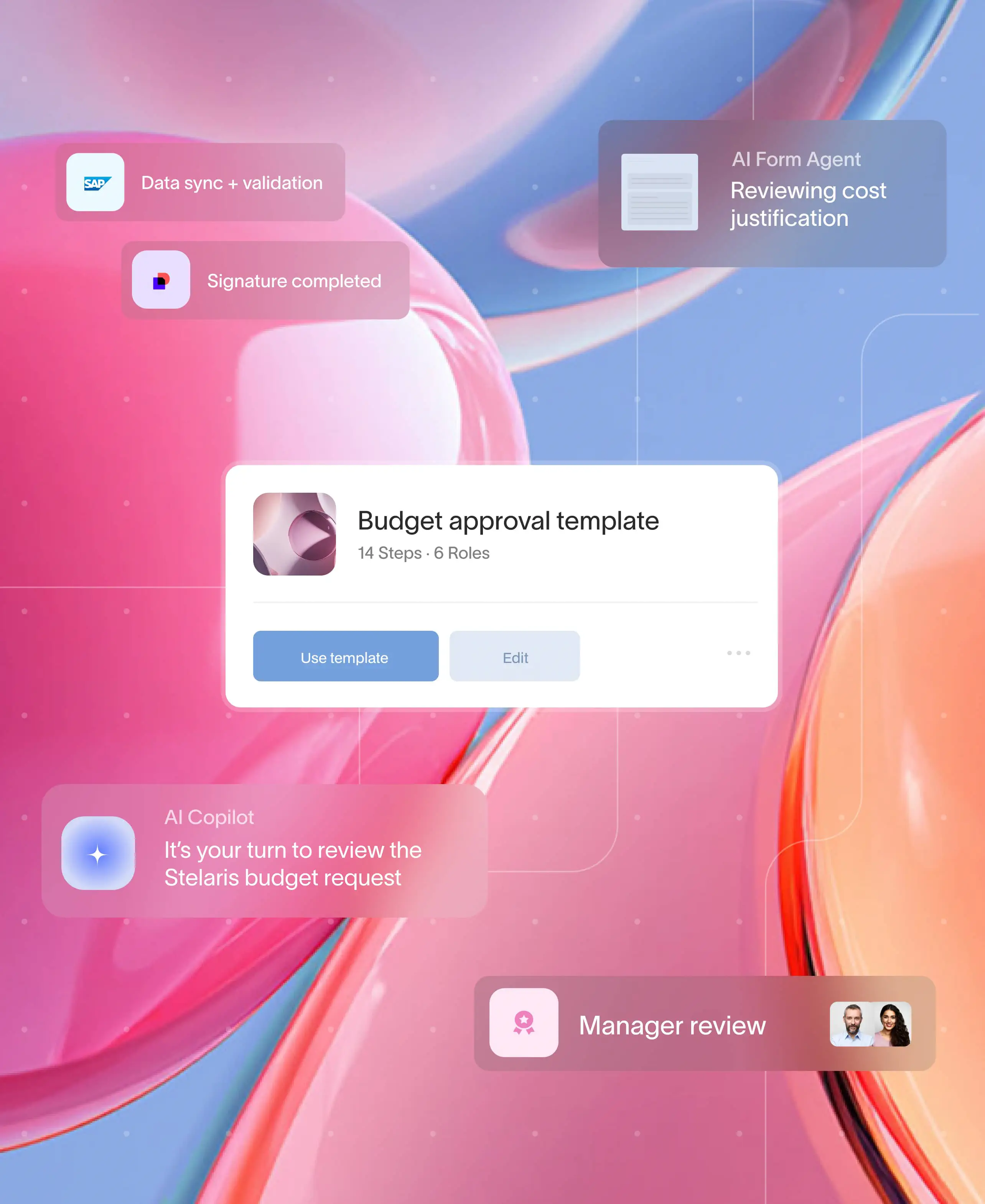.png)
In today’s digital world, where sensitive data is stored and shared online, secure file sharing for businesses is more critical than ever. A security breach can have serious consequences, making data confidentiality and secure file transfer for businesses non-negotiable.
Client portals provide a convenient, centralized platform for sharing data and collaborating with customers. They preserve data confidentiality by allowing only authorized access and encrypting data.
With the best practices, businesses can ensure that their client portals are safe, protecting confidential data and their reputation. Additionally, these practices help mitigate potential threats and foster trust. Here are the best practices to secure file transfer for business in client portals.
Why does secure file sharing matter
In today's digital age, secure file sharing in client portals ensures the safe and efficient transfer of sensitive information. As cyber threats become more sophisticated, best practices for secure file sharing are not only advisable but necessary.
Additionally, as businesses shift towards digital solutions, the need for safe and reliable file-sharing methods becomes more critical. For clients, knowing that their data is secure fosters trust and confidence in the business and its services.
Besides adding to their reputation, businesses need secure file sharing with clients for:
- Protecting sensitive data: Safeguard confidential and sensitive client information from unauthorized access.
- Preventing data leaks: Reduce risks of confidential data leaks, hindering client trust and brand reputation.
- Compliance: Meet regulatory requirements for data security and privacy.
- Maintaining trust: Strengthen client relationships with a commitment to privacy and security.
- Preventing data breaches: Minimize the risk of cyberattacks or leaks that can harm businesses and clients.
- Efficiency: Facilitate secure and efficient document collection and sharing without using insecure methods.
Thus, secure file-sharing platforms are essential to fostering strong, reliable, and trusted client relationships. They also enhance overall business security in digital communications.
Challenges to implementing secure file sharing in client portals
Secure file sharing in client portals is essential but can present several challenges. To address these challenges, creating a secure environment for file sharing while maintaining operational efficiency is important. Below are some of the key challenges:
- User resistance and compliance issues
- Balancing security with usability
- Integration with existing systems
- Scalability concerns
- Compliance with regulatory standards
- Ensuring ongoing security updates
- Maintaining control over shared files
- Ensuring consistent data protection across different devices
With the right strategies in place, businesses can overcome these challenges to build a robust and secure file-sharing infrastructure.
Best practices for secure file sharing in client portals
1. Emphasize end-to-end encryption
Encryption is the cornerstone of secure file sharing. Ensure that the client portal employs strong encryption protocols to protect sensitive information during transfer and storage.
Strong encryption keeps sensitive information unreadable without the decryption key. It also protects data from unauthorized access through internal or external threats.
2. Implement multi-factor authentication
Multi-factor authentication adds an extra layer of protection to sensitive data. It serves as a second form of verification like an OTP, more than just a username and password.
This prevents hackers from gaining access even if they manage to hack into a single device. It is an essential practice for clients and employees, providing a significant reduction in unauthorized access to data.
3. Set permission-based access controls
Access controls are vital for protecting sensitive information. Set clear permissions for each client, ensuring only authorized users have access to files and documents relevant to them.
Implementing permission-based controls minimizes the risk of accidental data leaks. It also supports regulatory compliance by ensuring only authorized access to client information.
4. Enable audit trails
Audit trails maintain detailed records of who accessed the file along with the changes made. By enabling audit trails, businesses can monitor all activities on the portal to detect potential security threats.
Audit trails using the best document management software are also valuable for compliance purposes. Regularly reviewing audit logs ensures that files are accessed and handled appropriately, minimizing the risks of security or legal breaches.
5. Use digital signatures for added validation
Incorporating digital signatures adds an extra layer of authentication and security, especially when sharing important documents. Digital signatures verify the integrity of the document, which confirms the sender's identity.
It creates a unique identifier for document management as well as the sender. Digital signatures are an easy and effective way to add a layer of trust and validation.
6. Monitor and respond to security incidents
Irrespective of precautions, there's always a chance of a security breach. Thus, having a clear incident response is essential to address potential threats quickly and efficiently.
Also, regular monitoring helps in the early detection of any unusual activity within the portal. A well-structured plan enables businesses to quickly mitigate these issues and restore the security of the portal.
Elevating security: Effortless and secure file sharing with Moxo
Today, in the growing digital landscape, secure file sharing for business has become paramount, especially when handling sensitive client information. Moxo, a leading provider of secure client portals, offers businesses a robust platform for sharing, managing, and collaborating on files and documents.
Moxo's secure client and file-sharing portal leads the way to protect sensitive data. It combines cutting-edge security features with an intuitive user interface to stand out in elevating security for businesses. The platform encrypts sensitive data, ensuring maximum protection of client information.
Moxo also has tracking tools for detailed file activity, offering a comprehensive record of its access. This adds to the accountability and security of data. Regular monitoring and compliance with legal regulations also strengthen the security of the portal.
Additionally, Moxo's client portal effortlessly scales to accommodate business growth. Whether it is more clients, large files, or enhanced security needs, Moxo can easily be customized to fulfill businesses’ requirements. The platform also complies with industry standards, ensuring that businesses and clients trust the secure management of sensitive data.
The secure file-sharing portal from Moxo is a powerful solution for businesses as they prioritize client data safety. With its robust security features, intuitive design, and scalability, Moxo is undoubtedly an essential tool in today's digital world.
By following these best practices for secure file-sharing platforms, businesses maintain safety and reliability with Moxo. It helps businesses foster trust with clients and ensure the integrity of client data against potential threats.
With its proactive approach to security, businesses can confidently use Moxo’s client portal to manage sensitive client data. Secure file sharing is an ongoing effort and staying vigilant is the key to protecting valuable information.
Schedule your demo call now and get started with Moxo!
Conclusion
The best practices outlined mitigate the risks associated with transferring and storing sensitive information against malicious attacks and data breaches. Successful implementation of these practices enhances the security and integrity of client communication. It is also crucial to protect sensitive information and maintain client trust.
Protecting client's data not only fosters trust and strong relationships but also adds to your reliability and reputation. By implementing strong encryption, multi-factor authentication, and regular updates, businesses can safeguard sensitive data from breaches. Additionally, setting access controls further strengthens security.
These best practices not only enhance the safety of confidential data but also ensure a commitment to privacy. It helps businesses to foster long-term and profitable client relationships. Prioritizing secure file sharing in client portals is an investment in data protection and business integrity.
Get started with Moxo and invest in a secure client portal today.
FAQs
How to secure file sharing within client portals?
To ensure secure file sharing in client portals, businesses can follow these practices:
- Encryption: Always encrypt files during transfer and storage to protect sensitive data.
- Access control: Set up strict access control measures like role-based permissions to ensure authorized access to sensitive data.
- Two-factor authentication: It adds an extra layer of security for users accessing the portal.
- Regular audits: Perform regular audits of file access and sharing to monitor any suspicious or unauthorized access.
How to control access to shared files within a client portal?
To control file access, portals utilize role-based access control. This approach defines the permissions for each user based on their role, ensuring only authorized access to sensitive information. Portals also enable businesses to restrict or grant access to certain files based on individual needs.
Is it safe to share large files through client portals?
Yes, client portals have strong security measures like encryption and access control, providing a safe environment to share large files. Additionally, they protect sensitive information from unauthorized access during transfer and storage.
How to track the accessing of shared files?
The most secure client portals like Moxo offer file tracking features to track who accesses the files. This ensures transparency and accountability in file sharing, fostering strong and lasting client relationships with uncompromised security.





